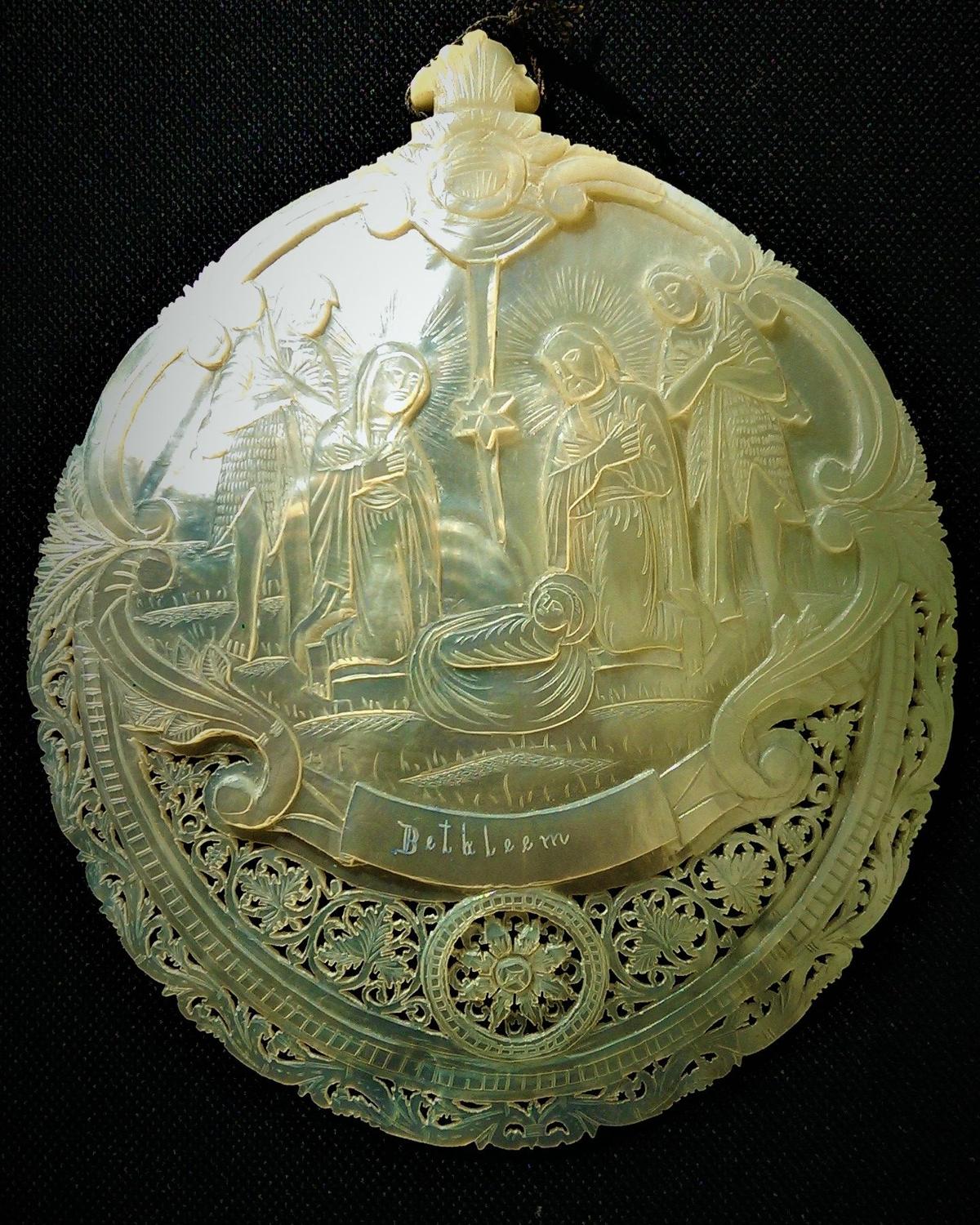
Code: 10074
Dimensions:
Acquired by Museo Internazionale del Presepe, Greccio, Italy
A Mother-of-Pearl Baptismal Spoon
Carved with the Nativity.
Holy Land, 1st Quarter of 19th Century
Size: Height: 22 cms, Width: 21 cms (Approx.)
Description:
A natural shell of good size, richly carved with a central panel depicting the birth of Christ beneath which is a banner with the word "Bethleem" (the spelling of Bethlehem as used in the Latin Vulgate Bible (i.e. Matthew 2:1 "cum ergo natus esset Iesus in Bethleem Iudaeae")). The top of the shell carved with finial, pierced though and with an old section of gold wrapped wire - allowing the shell to be hung as a plaque. Beneath the scene a roundel with a "Passion Flower" amongst pierced scrolling vine leaves.
Notes:
These carved shells served both as devotional plaques and baptismal spoons. They were popular as souvenirs amongst the wealthiest European pilgrims to the Holy Land, who sometimes gave them as christening gifts or presented them to churches on their return. The carving is generally attributed to monks from the Franciscan Order, to whom Pope Clement VI had granted Custodia Terræ Sanctæ in 1342, who practised the art of shell carving to provide revenue for their mission to guard "the grace of the Holy Places". The Fransiscans also trained Arab craftsmen and women to undertake this work. Mother of pearl items were retailed outside the holy sites and the industry was noted in the writings of Richard Pococke (1704-1765) on his visit to Bethlehem in 1727. The art form reached its peak in the early decades of the 19th Century. Suitable oysters for the mother-of-pearl were originally found in the Red Sea but by the later 19th and early 20th Centuries it became necessary for them to be sourced from further afield. The skills and techniques of the finest mother-of-pearl carving are now all but lost.
The Vatican Museums, V&A in London, Ashmolean Museum in Oxford and Hermitage Museum in St Petersburg hold similarly fine examples.
Literature:
Richard Pococke, "A Description of the East and Some other Countries, Vol. I: Observations on Egypt", W. Boyer, London, 1743
Piotrovsky, M, et al, "Pilgrim Treasures from the Hermitage: Byzantium – Jerusalem", Lund Humphries, 2005
Provenance:
UK Private Collection
Now with the International Museum of Nativity Scenes, Greccio, Italy